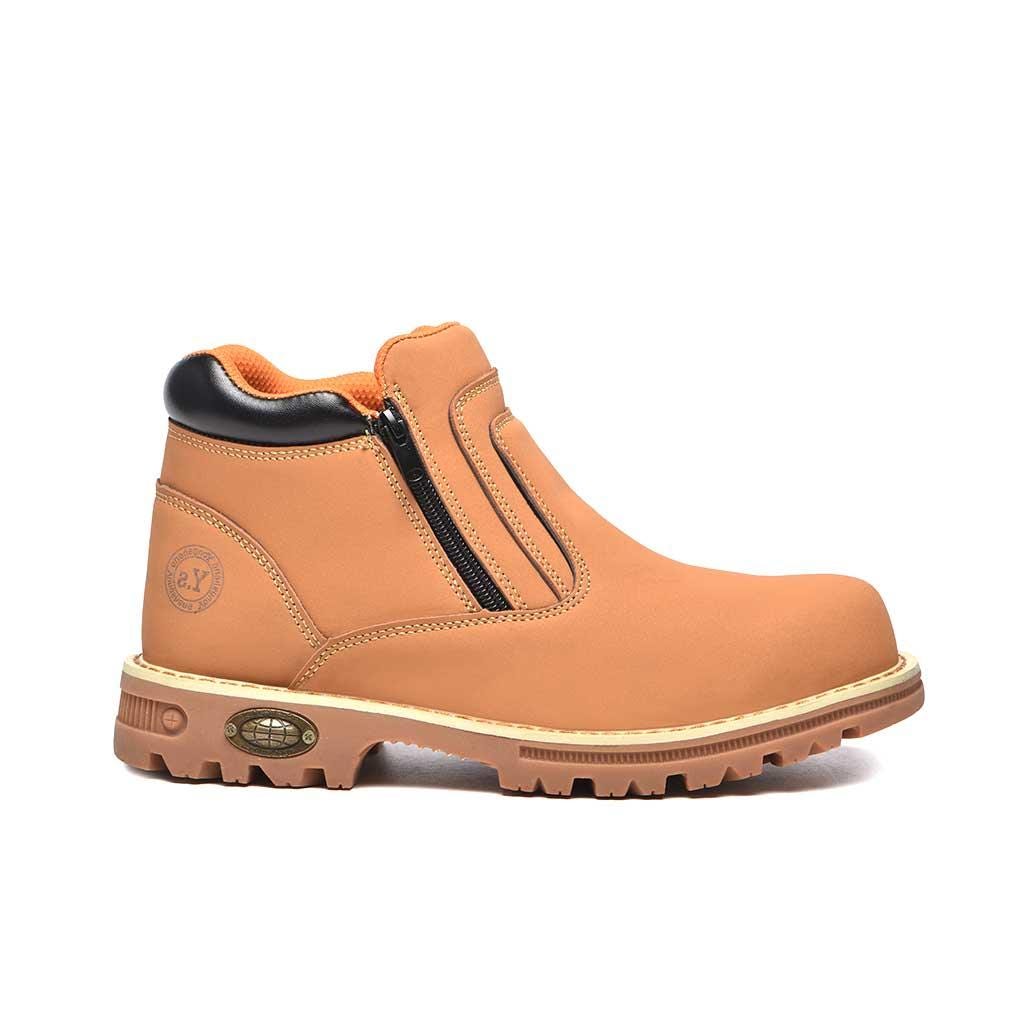What Features Should You Look for in Men's Steel Toe Shoes?
Men's steel-toe shoes are a necessary accessory for many employees and are necessary when working in various severe conditions. Whether working in construction, in a factory as a factory worker, or operating heavy machinery, the right steel-toe shoe will tremendously reduce your risks and increase your comfort. Selecting the right pair depends on several aspects related to the pair's functionality.
1. Safety Standards Compliance
The first critical feature to search for primary and most important is compliance with safety standards. Safety shoes must, at least, yield to the norms of specific organizations such as the American Society for Testing and Materials (ASTM) and the Occupational Safety and Health Administration (OSHA). These standards ensure that the shoes afford sufficient safety against shaft influence and compression forces that are prevalent in numerous workplaces.
2. Toe Protection
The main distinguishable characteristic of the work shoe is the steel cap on the toes, which shields the feet against any falling item and heavy compression. However, in this case, it is essential to pay attention to the form and size of the toe box. The toe should be spacious for your toes and should not be constricting or too tight, as this will affect its flexibility.
3. Comfort and Fit
Footwear design is sensitive because people's feet are susceptible to discomfort and pain; it is even more critical if one spends most of their time standing. Choose Steel-toe shoes for men that fit well around the toe and should be spacious and relaxed; the other should fit well and comfortably around the foot. Some protection in the form of steel-toe shoes possesses additional features intended to improve comfort, namely cushioned collars and tongues, insole, and breathable lining.
4. Support and Stability
Appropriate support and stability are essential to avoid excessive weariness of the feet and deter injuries. The primary things to note are good support for your arch and a firm midsole on the shoe. Some steel-toe shoes come with extra support enhancements like a shank, which assists in enhancing the structural integrity of the shoe and stability in hurdle terrains.
5. Durability and Construction
The protective shoes must be made of a strong material, especially where the foot is more exposed, such as when using steel-toe shoes. They are long-lasting due to quality materials and proper building techniques. Choose shoes with more complex toe caps and shoes made of quality materials like full-grain leather because they are highly resistant to wear.
6. Slip Resistance
Anti-slip properties are fundamental, especially when the surface is wet, oily, or otherwise slippery. Seek Steel toe shoes with outsoles manufactured from slip-resistant material like rubber or polyurethane, and the tread patterns on these shoes should be efficient. Slip-resistant shoes, such as deep channels or multidirectional shoe outsoles, may also prevent slips and falls.
7. Waterproofing and Breathability
If your job is wet and muddy, your boots should be steel-toed and waterproof so your feet do not get wet. Usually, waterproof shoe materials and design approaches aim to protect the shoe from water while letting moisture escape while wearing it. Thus, your feet remain dry. Waterproofing is skillful, so the man prefer those on which waterproof membranes like Gore-Tex or water-resistant coatings are used for shoes.
8. Electrical Hazard Protection
Employees with electrical risks should wear shoes with electrical hazard certification. The specific purpose of these shoes is to minimize the chances of getting an electric shock by touching the ground. Shoes marked as EH or Electrical Hazard rated to conform to the ASTM requirements in electrical protection.
9. Puncture Resistance
In some working conditions, there is a danger of stepping on sharp materials that could easily poke through the soles of the shoes. Puncture-resistant shoes come with a protective plate commonly made from steel or other lighter compounds placed in the soles of the shoes to avoid penetration by sharp objects. This feature is indispensable in construction, the manufacturing sector, and anywhere where nails, glass, and similar sharp objects are likely to be used.
10. Weight
The weight of steel-toe shoes can affect comfort and fatigue levels, especially if you're on your feet all day. Traditional steel-toe shoes tend to be heavier due to the steel components. Still, many modern designs use lighter materials without compromising safety. Composite-toe shoes, for example, use materials like Kevlar, carbon fiber, or plastic, which provide similar protection with less weight.
11. Insulation
Insulated steel-toe shoes can help keep your feet warm if you work in cold environments. Insulation materials, such as Thinsulate, provide warmth without adding bulk, allowing you to stay comfortable in low temperatures. Look for shoes with the appropriate level of insulation based on your work conditions—heavier insulation for icy environments and lighter insulation for milder conditions.
12. Style
While security and functionality are the primary considerations, style can also influence your choice of steel-toe shoes. Modern Men's steel toe shoes come in various styles, from traditional work boots to more casual, sneaker-like designs. Choosing a style you feel comfortable wearing can boost your confidence and satisfaction with your footwear.


